Futurism
Space Dance
Raquel Welch dances in a silver bikini to a jazzed up version of Richard Strauss's "Also Sprach Zarathustra" — since Kubrick's 2001: A Space Odyssey forever made that piece synonymous with space travel.The clip is from Raquel!, a 1970 CBS television special.
Posted By: Alex - Tue Oct 04, 2022 -
Comments (3)
Category: Futurism, Music, Space Travel, 1970s, Dance
Downsizing the human race
I never saw the 2017 movie Downsizing, but I understand that it involved the premise of shrinking people so that they would use fewer resources.Perhaps the speculations of "theoretical biologist" Thomas Easton, published in Omni magazine in January 1983, may have inspired the movie:
"Cut people down to about three feet in height and they won't eat as much food," Easton says. "Cars could then be the size of little red wagons, with all the old gas guzzlers converted to buses. In fact man's appetite for open space and raw materials would decrease to match his stature.
"This new breed of human," Easton says, "would have far more muscle, with the ability to run and jump almost like a cat. Reduced weight would ease the wear in joints, cutting the prevalence of arthritis. Since less blood would be pumped through a small circulatory system, the heart's work load would be diminished and there would be fewer cardiac arrests.
"The technology to shrink humans," Easton says, "will probably be available within a decade. A genetically engineered virus, carrying genes coded to create small people, could be placed in a reservoir or released in the air. Then everyone infected would absorb the genes and produce lilliputian offspring."
Posted By: Alex - Tue May 04, 2021 -
Comments (7)
Category: Body Modifications, Futurism, 1980s
Future Man
Back in the early 1980s, orthodontist David Marshall, from Syracuse, NY, liked to speculate about what humans would look like 2 million years in the future. Or what "Future Man" would look like, as he referred to our descendants. Based on previous trends in our evolution, he concluded that Future Man will be hairless, big-skulled, small-jawed, and have few teeth.I was going to say that 'Future Man' sounds like a great name for a comic or TV series. But when I googled the name, I discovered that there already is a Future Man series.
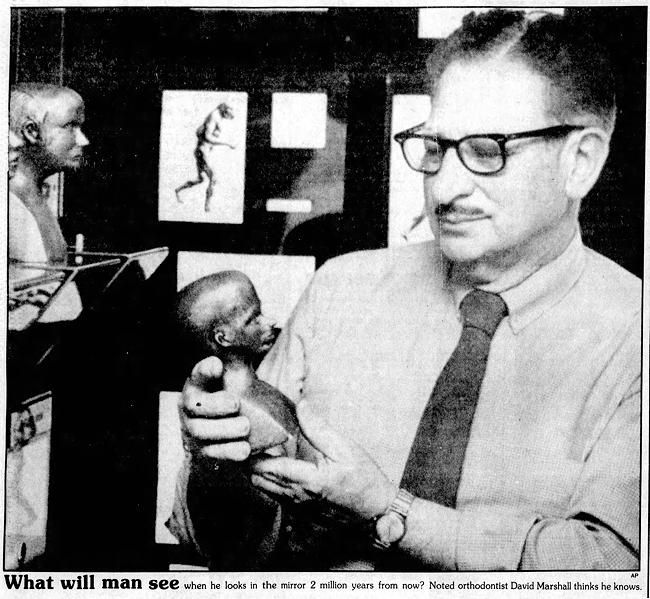
Spokesman Review - Jun 15, 1981
Today’s diet of soft, processed foods will take its toll on the human jaw and teeth, which have been diminishing since prehistoric days when our ancestors used their mouths as weapons, in addition to making tough foods palatable, Marshall says.
“Nature has a wonderful way of providing for her needs. Whatever she doesn’t need, she gets rid of,” Marshall says. “Things develop according to function. If you use something, it develops. If you don’t, it disappears.”
Since people today do not use their teeth the way they once did, future people probably will have much smaller, and fewer teeth, Marshall’s prediction indicates. They will be practically hairless and their jaws will diminish as they have for thousands of years, he says. The chin and nose will be more prominent.
The changes Marshall foresees also will give future people a wider range of facial expressions…
He has turned his office into a museum on the development of the human skull, tracing its evolutionary and embryonic progress in exhibits and photographs… One of the exhibits in his personal museum is a line of busts depicting the evolutionary changes in the human skull from prehistoric times to his vision of what people will look like 2 million years into the future…
But even with the possibility of scientific advances influencing evolution, Marshall expresses confidence that his projections cannot be disputed.
“No one is going to disprove me,” he says. “They won’t be around.”
-The Semi-Weekly Spokesman-Review - June 15, 1981
According to Marshall's obituary (he died in 2006), the anatomical museum he once had in his dental office was eventually moved to Syracuse University. Although I can't find any record of it there now.
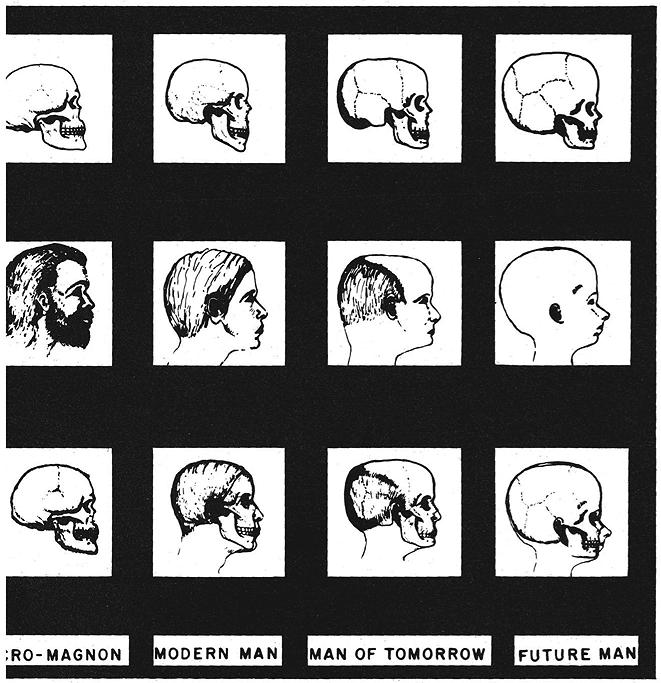
David Marshall, “Changes in the skull—past, present, and future—because of evolution.” Journal of the American Dental Association. Nov 1975.
Posted By: Alex - Mon Sep 23, 2019 -
Comments (4)
Category: Futurism, Predictions, Anthropology
A Forecast of Amazon?
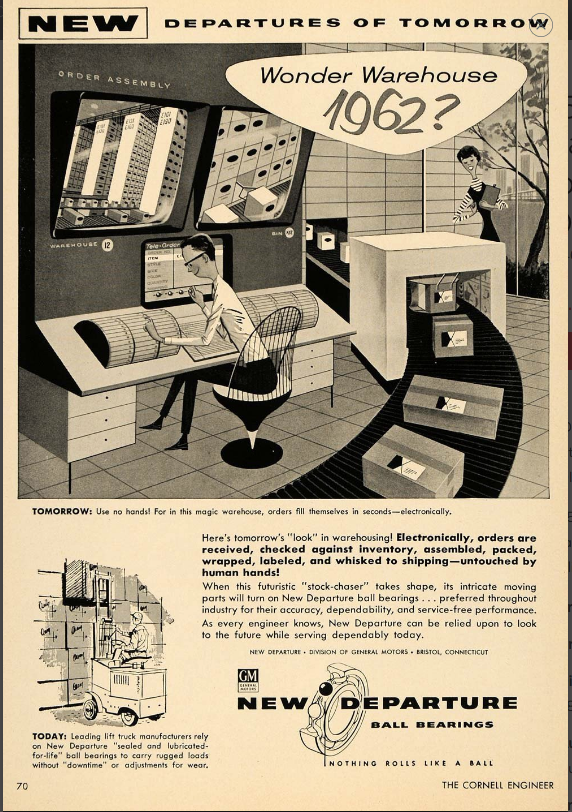
Source.
Posted By: Paul - Mon Jul 23, 2018 -
Comments (1)
Category: Business, Advertising, Retailing, Futurism, 1950s
Fashion 2000
Interestingly, I think the predictions from farther away from the year 2000 were a bit more accurate than those that were closer!
Posted By: Paul - Tue Nov 15, 2016 -
Comments (1)
Category: Fashion, Futurism, 1930s, 1960s, Twenty-first Century
Our American Crossroads
The weird part of this documentary is the puppet diorama and its turntables. A strange form of presentation.
Of course, this documentary also represents about the first two-thirds of the famous poster by Robert Crumb.
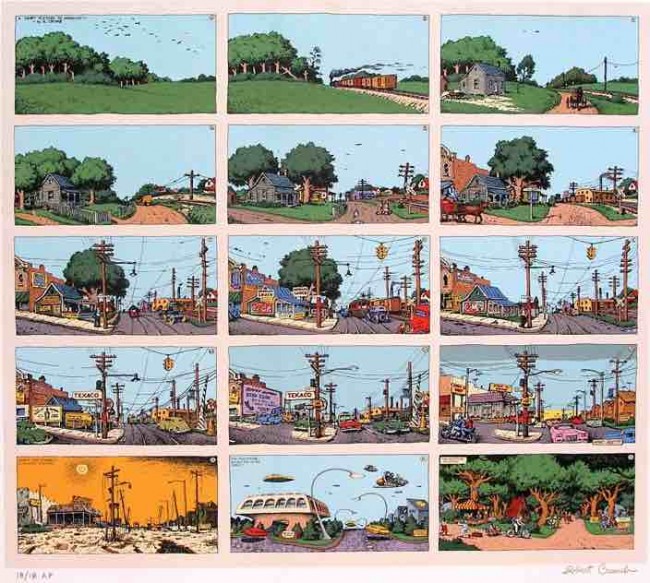
Posted By: Paul - Fri Jun 10, 2016 -
Comments (3)
Category: Futurism, Comics, Documentaries, 1960s, Cars, Yesterday’s Tomorrows
Robot Ballet
The Italian Futurists had a thing for robot costumes in their dance performances. They left behind some weird imagery.
Read about them here.

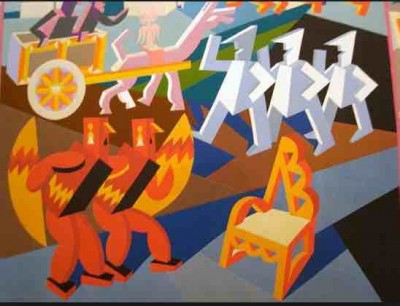
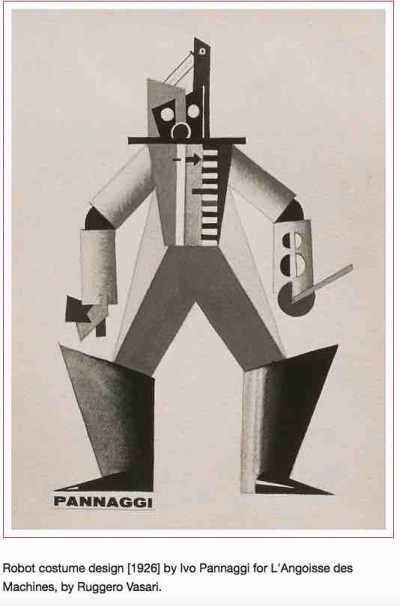

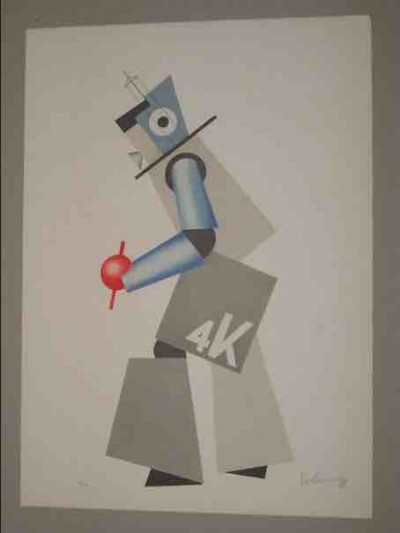
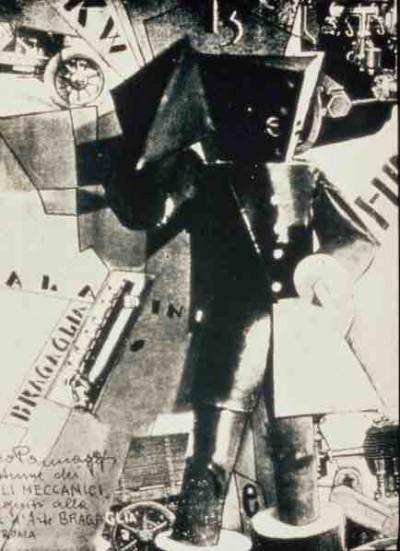
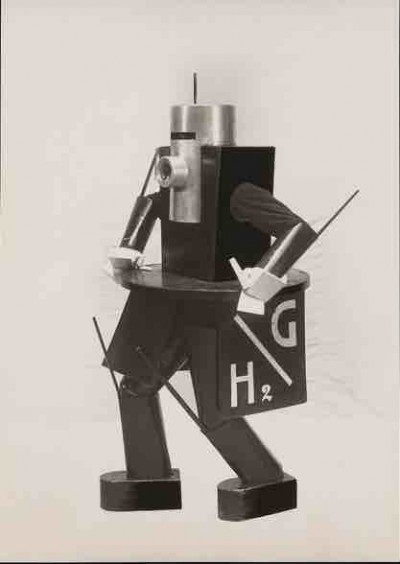
Posted By: Paul - Tue May 17, 2016 -
Comments (1)
Category: Costumes and Masks, Futurism, Robots, Avant Garde, Dance, Europe, Twentieth Century
Predictions, Sponsored by the Weatherhead Company
World War II naturally had people thinking about what would come afterwards. Here are some experts offering us their visions of the future.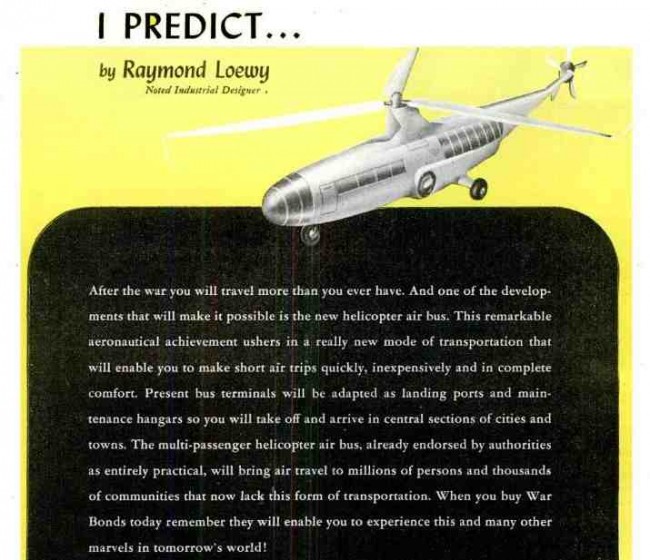
Original ad here.
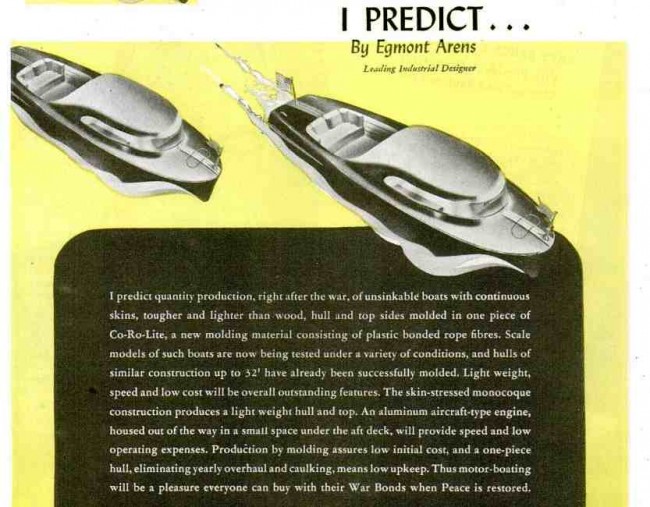
Original ad here.
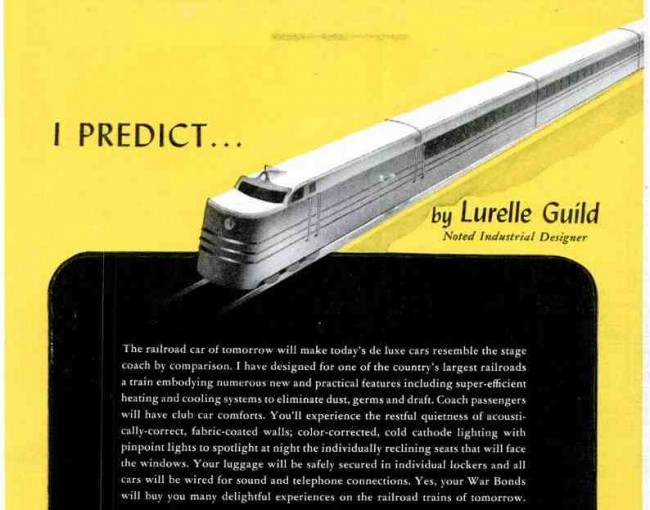
Original ad here.
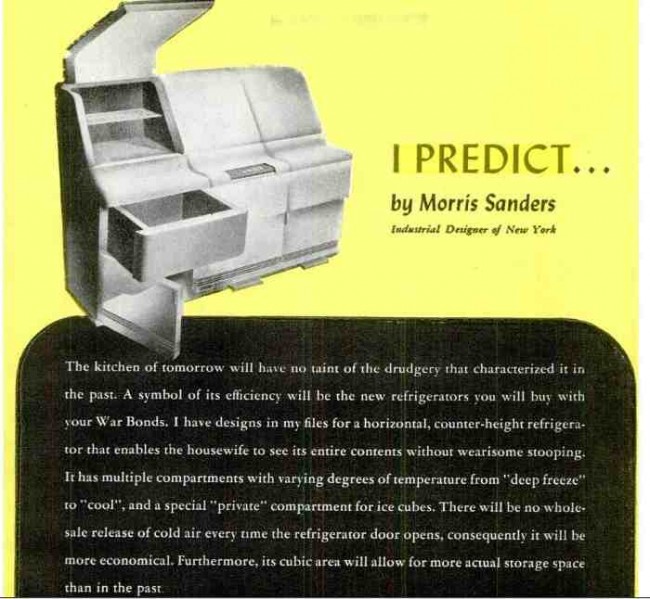
Original ad here.
Posted By: Paul - Thu Mar 24, 2016 -
Comments (13)
Category: Design and Designers, Futurism, Technology, 1940s
Spocking The 5


Its not illegal to deface money in Canada. The banks do not like it but the trekkies up north don't care! Live long and prosper ay.
Posted By: Alex - Fri Jul 10, 2015 -
Comments (5)
Category: Eccentrics, Futurism, Money
Mystery Illustration 3
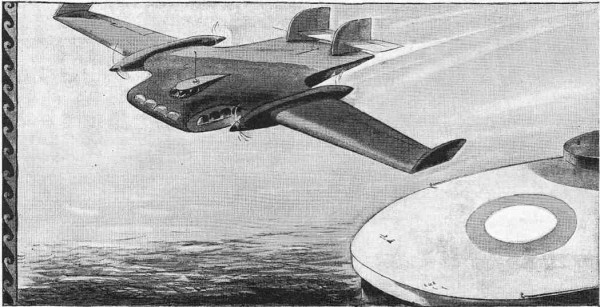
This "futuristic" plane was:
1) conceived in the 1920s to occur in the 1940s
2) conceived in the 1930s to occur in the 1950s
3) conceived in the 1940s to occur in the 1970s
4) conceived in the 1950s to occur in the 1980s
The answer is here.
Posted By: Paul - Mon Dec 01, 2014 -
Comments (7)
Category: Futurism, Air Travel and Airlines, Yesterday’s Tomorrows

| Who We Are |
|---|
| Alex Boese Alex is the creator and curator of the Museum of Hoaxes. He's also the author of various weird, non-fiction, science-themed books such as Elephants on Acid and Psychedelic Apes. Paul Di Filippo Paul has been paid to put weird ideas into fictional form for over thirty years, in his career as a noted science fiction writer. He has recently begun blogging on many curious topics with three fellow writers at The Inferior 4+1. Contact Us |




